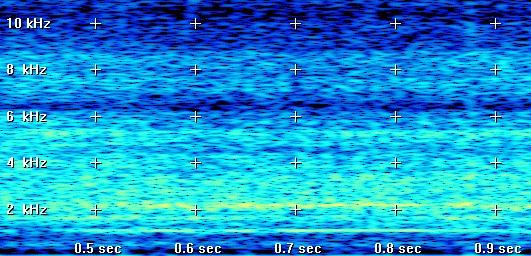
Tachi o Mictlantecuitli
Aerophone or whistle of the devil (diablo)
Roberto Velázquez Cabrera
Virtual Research Institute Tlapitzcalzin
First version, April 28, 2003.
(Versión en Español)
The photo shows a mask of a devil and a mouth noise generator on a deer's skin. They can be used to dance and to roar like the devil by the performer. The aerophone can be sticked to the mask with beeswax to free the hands of the dancer to be able to operate at the same time other sonorous artifact like a whip (chicote) that is used by some mexican devil's dancers.
That beautifull mask belongs to Angel Mendoza from Nican, Juxtlahuca, Oaxaca, Mexico, where he dances as Diablo and Rubio. It was made by Alex Vera. These masks of Juxtlahuaca are the best of Mexico. They are made on dried wood of the big tree "sabino" or "ahuehuete", usually 500 - 1000 years old. Now, the best masks are decorated with oil painting. Some diablo's masks are shown in the Yahoo Photo album of Angel Mendoza
The mouth noise generator is a very special mexican whistle or aerophone. It is not a common whisle. It must be played inside the mouth of the mask and the mouth of the performer. The sounds of this kind of aerophones can be loud and noisy and they are not musical sounds. Their frequency components are noisy in a wide band and some dB peaks are generated depending of the dimensions and designs. The sounds seem from the underworld, from prehistoric animals or from the hell, very fine to perform dances and shamanic rites related with the devil.
There are evidences in the iterature, murals and iconography that in Ancient Mexico and other zones of America there were many dances where their performers used mask of sacred animals and devils. They wish to represent or to be like the beings of the mask, because they venerate all kind of beings from nature and the underworl. This is a photo of other similar mask - noisy aerophone using a devil's mask from the state of Guerrero, Mexico.
This is a short and flat but complex wav sound of a diablo's roar. The sounds can be more complex if the tongue and the resonating chamber inside the mouth are altered or vibrated during the blowing to modify the pitch, the timbre to generate rhytms and weaving or pulsating sounds.

Spectrogram of the devil's roar.
Similar mask-aerophone system can be used to dance and roar like many animals. In several rural areas of Mexico there were hundreds of masks and still it is possible to find some of them. The addition of the aerophone and it sounds make a better representation, if the generated sounds are related with those of the being represented by the mask.
Some ceramists interested in this family of ancient noisy aerophones are begining to use masks in their designs of sonorous sculptures like Hylary Kerrod from New Zeland.
The ancient aerophones of this type were made (in bone and stone) since the prehistoric time and in the begining of several mexican cultures like those of the West and the Gulf Coast of Mexico. The Mexican Noise Generator were presented in the First Sessions on Acoustics of Ancient Sonorous Instruments. and some members of this family of noisy aerophones were presented in other international meetings of acousticians like the olmecan gamitadera. and olmecan aerophone of black stone


